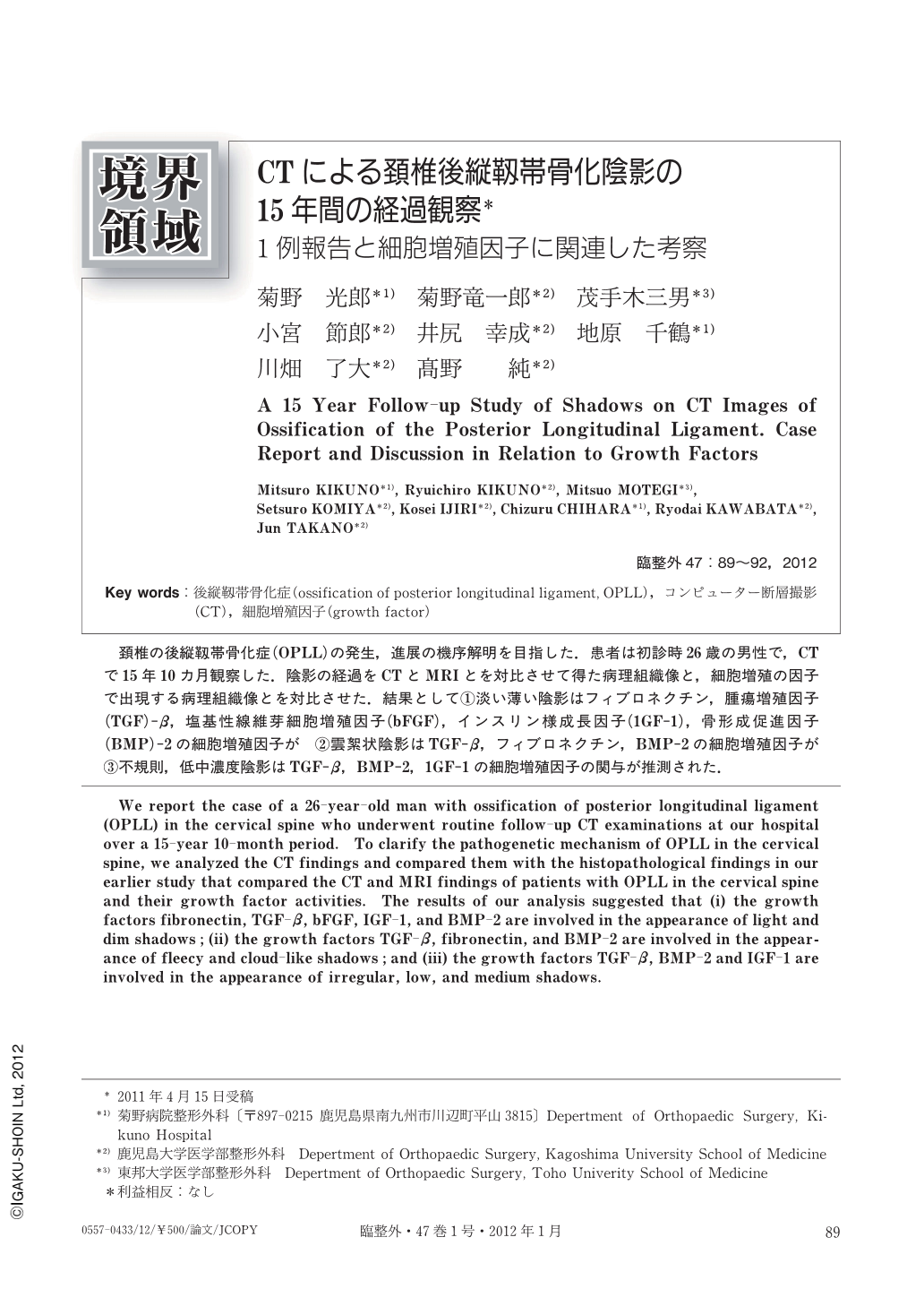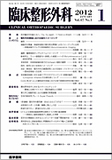Japanese
English
- 有料閲覧
- Abstract 文献概要
- 1ページ目 Look Inside
- 参考文献 Reference
頚椎の後縦靱帯骨化症(OPLL)の発生,進展の機序解明を目指した.患者は初診時26歳の男性で,CTで15年10カ月観察した.陰影の経過をCTとMRIとを対比させて得た病理組織像と,細胞増殖の因子で出現する病理組織像とを対比させた.結果として①淡い薄い陰影はフィブロネクチン,腫瘍増殖因子(TGF)-β,塩基性線維芽細胞増殖因子(bFGF),インスリン様成長因子(1GF-1),骨形成促進因子(BMP)-2の細胞増殖因子が ②雲絮状陰影はTGF-β,フィブロネクチン,BMP-2の細胞増殖因子が ③不規則,低中濃度陰影はTGF-β,BMP-2,1GF-1の細胞増殖因子の関与が推測された.
We report the case of a 26-year-old man with ossification of posterior longitudinal ligament (OPLL) in the cervical spine who underwent routine follow-up CT examinations at our hospital over a 15-year 10-month period. To clarify the pathogenetic mechanism of OPLL in the cervical spine, we analyzed the CT findings and compared them with the histopathological findings in our earlier study that compared the CT and MRI findings of patients with OPLL in the cervical spine and their growth factor activities. The results of our analysis suggested that (i) the growth factors fibronectin, TGF-β, bFGF, IGF-1, and BMP-2 are involved in the appearance of light and dim shadows;(ii) the growth factors TGF-β, fibronectin, and BMP-2 are involved in the appearance of fleecy and cloud-like shadows;and (iii) the growth factors TGF-β, BMP-2 and IGF-1 are involved in the appearance of irregular,low,and medium shadows.

Copyright © 2012, Igaku-Shoin Ltd. All rights reserved.


